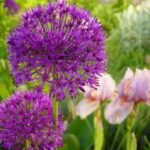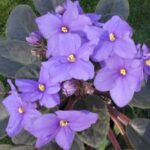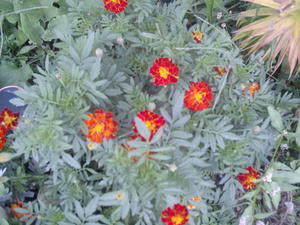Plants are very interesting. With so many different kinds of plants, people should know which plants offer the best qualities for indoor use. Here is a list of 10 indoor plants that are more than just ideal for interested consumers.
1. Amaryllis. The Amaryllis is a native of South Africa and requires good lighting and a warm place to sit. Keeping the soil moist, houseplant fertilizer should build up the bulb’s strength. It can be moved outdoors in warm weather, and blooms beautifully indoors, as well.
2. African Violets. These houseplants are easy to grow. Their blooms often last for several weeks. Place them in a sunny window, taking care to avoid hot rays during the summer months. Artificial lighting would help if little sunshine is available. Most garden stores carry soil mixes and fertilizer designed especially for African Violets. Just be sure to avoid nigh Nitrogen formulas in the fertilizer you plan on using for African Violets. They should be watered, from the bottom up, every three days. Ideal temperatures for African Violets are 75 degrees during the day and 60-70 degrees during the nights.
3. Impatiens. These indoor houseplants have glossy, attractive leaves, even when not in bloom. These plants are compact, and brighten up homes during the winter. Impatiens require light and heat to germinate. Impatiens seeds should be sown into trays or peat pots, covered with 1/8 inches of seed starter soil. After the Impatiens indoor houseplant has been properly established, cutting can be made for separate baskets and containers. Impatiens prefer rich, moist soil that drains well. Water them regularly and add a general purpose fertilizer once a month. In containers, pots and baskets, water every 3-4 weeks with a liquid fertilizer in place of dry fertilizers. Impatiens are susceptible to frost, so bring them indoors before the winter starts. Impatiens also experience some problems with aphids and mites, so use insecticidal soaps and repellents, treating disease problems with fungicide.
4. Paperwhite. The Paperwhite Narcissus is a native to Europe and Asia. Fill a shall bowl, pot, or container part way with decorative stones. Plain stones, gravel, and even soil works too. Set Paperwhite bulbs onto the stones, pushing them down just far enough so the bulbs are supported in an upright position. Put several of them together. Add water to the bottom of the bulb. Put them in a cool, dark place for one to two weeks. When the roots begin to take hold, put the pot into a brightly lit room. It should take approximately 4 to 6 weeks for the Paperwhites to bloom!
5. Poinsettias. These plants are native to the warmer southwestern U.S. climates and Mexico. Look for flowers that are completely open. Be sure to avoid exposure to cold and wind. Poinsettia blooms last over 2 months long. Their ideal temperature range is 60 – 70 degrees. Be sure to water Poinsettias thoroughly, then let the soil dry between watering. Poinsettias can not withstand frost and can grow up to 10 feet.
6. Spider Plant. Spider plants send out shoots, or stalks. At the end of these stalks are tiny baby plants. Remove these baby spider plants and place the roots in water. After the roots have grown to an inch or more, transplant them into a container, with rich, well drained potting soil. Make sure that the soil drains well and give them a liquid fertilizer once every two to four weeks. Spider plants will do well in low light conditions, and benefit by being placed in a sunny window once or twice a week. Don’t leave them close to a window on cold nights as they do not like really cold temperatures.
7. Coleus. Coleus indoor houseplants have very colorful leaves. Coleus like sunshine, but tolerate shade very well, making them a great indoor houseplant. They also need rich, soft soil that drains well. Coleus is grown from seed or cuttings. When growing from seed, spread thinly and cover lightly with soil, then water lightly. They will germinate and grow rapidly at a soil temperature of 70 degrees or higher. Place cuttings in soft, rich soil. Keep the soil moist. Coleus thrives in full sunshine. They will tolerate partial shade and to some degree, full shade. Coleus is very susceptible to frost.
8. Geraniums. Geraniums fit well in home gardens, container gardens, flowerbeds, and houseplants. They have big, bright blooms, and are easy to grow almost anywhere. Geraniums live approximately 18 months. They will last over the winter. It is sometimes a little difficult to get Geraniums to bloom indoors, as they often become dormant, or slow their growth. They prefer soil on the dry side, and fertilization once a month. Geraniums are seldom bothered by insects and diseases.
9. Philodendrons. Philodendrons are easy to care for. They like well drained potting soil which contains a lot of rich organic matter. Apply liquid fertilizer, at least once every two to three weeks, and they tend to grow well. Philodendron do well in low to very low light conditions. They will thrive in any room of your house. The leaves of the Philodendron should be cleaned once a month, with a damp sponge or cloth. Aphids, mites, and other tiny insects can occasionally bother the plants. Wiping leaves with a cloth dampened with an insecticidal soap.
10. Aloe Vera. Aloe plants are native to Africa. Aloe plants can grow as small as an inch, and the most common indoor varieties grow several inches to a foot tall. Their thick, heavy leaves are filled with sap. Aloe prefers full sun, but will tolerate a light shade. Their roots spread wide, but shallow in the soil. Please be sure to water them thoroughly, then, allow the soil to dry in between waterings. Fertilize once a month for best growth.
Sources:
1. http://en.wikipedia.org/wiki/Indoor_plants#List_of_common_houseplants .
2. http://www.gardenersnet.com/hplants/hp1.htm .







